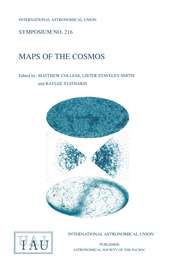Article contents
Stability of Elliptical Galaxies. Theoretical Aspects
Published online by Cambridge University Press: 04 August 2017
Extract
Stars, which contain more than 90% of the visible matter of the Universe, are organized into systems comprising a hierarchy of different masses and scales: from galactic stellar clusters to clusters of galaxies themselves. Most of the systems in this hierarchic sequence are collisionless: the characteristic time between collisions is much more than typical dynamical times (e.g., the period of oscillations). Various conditions of formation of collisionless gravitating systems leave traces on their main characteristic parameters—such as the angular momentum, the degree of anisotropy, the kind of dependence of the stellar density on coordinates, and so on. The lifetime of a system with a certain set of parameters depends essentially on whether these parameters belong to a region in which the system is stable, or not. If they do, the system may then exist practically without changes for an arbitrarily long time (in terms of the dynamical time scale); if they do not, it must quickly adjust to another, stable state.
- Type
- Invited Reviews
- Information
- Symposium - International Astronomical Union , Volume 127: Structure and Dynamics of Elliptical Galaxies , 1987 , pp. 301 - 314
- Copyright
- Copyright © Reidel 1987
References
REFERENCES
- 1
- Cited by


